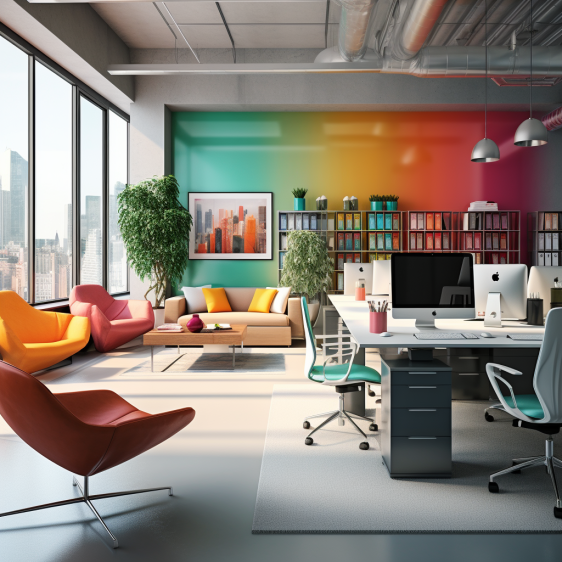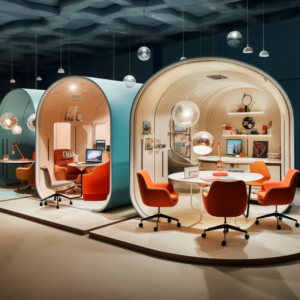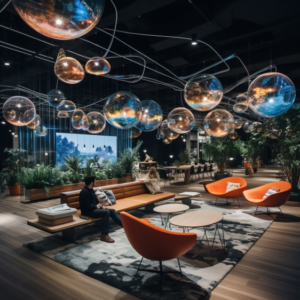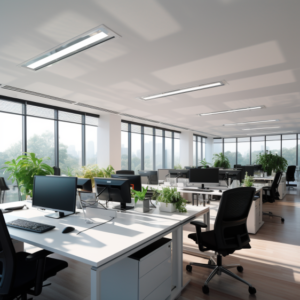The colors you choose for your office space play a significant role in shaping the atmosphere, mood, and productivity of the environment. As a decorator, I understand that the psychology of color is a powerful tool in office design. In this article, we’ll explore the impact of colors on the workplace and how to make informed choices when it comes to color palettes.
1. The Psychology of Office Colors:
- Understanding how colors can influence emotions and behaviors.
- The cultural and personal associations with different colors.
2. Calming Blues and Greens: Enhancing Focus and Tranquility:
- The calming effect of blues and greens on the mind.
- Incorporating these colors in workspaces for concentration.
3. Energizing Yellows and Oranges: Promoting Creativity and Energy:
- How yellow and orange can stimulate creativity and motivation.
- Using these colors in collaborative areas and breakout spaces.
4. Neutral Hues: Elegance and Versatility:
- The versatility of neutral colors such as white, gray, and beige.
- Creating a timeless and sophisticated office with neutrals.
5. Bold Reds and Vibrant Purples: Adding Drama and Impact:
- The boldness of reds and the richness of purples.
- When and how to use these attention-grabbing colors in office accents.
6. Accent Walls and Color Psychology: Focal Points in Design:
- Using accent walls to introduce color without overwhelming the space.
- Choosing the right wall for your color accent.
7. Personalizing Workstations: Customizing with Color:
- How employees can personalize their workspaces with color.
- Allowing for individual expression within the office.
8. Combining Colors: Creating Harmonious Palettes:
- Tips for combining multiple colors in office design.
- Achieving balance and harmony in your color scheme.
9. Color and Productivity: Finding the Right Balance:
- The connection between color and productivity.
- Striking a balance between energizing and calming colors.
10. Implementing Color Psychology: Practical Applications: – Real-world examples of how businesses use color psychology. – Case studies of successful office color schemes.
Conclusion: Color is a versatile and powerful tool in office design, capable of influencing everything from employee moods to productivity levels. By understanding the psychological impact of colors and making deliberate choices in your office’s color palette, you can create a workspace that not only looks aesthetically pleasing but also fosters a conducive and motivating environment for work.



